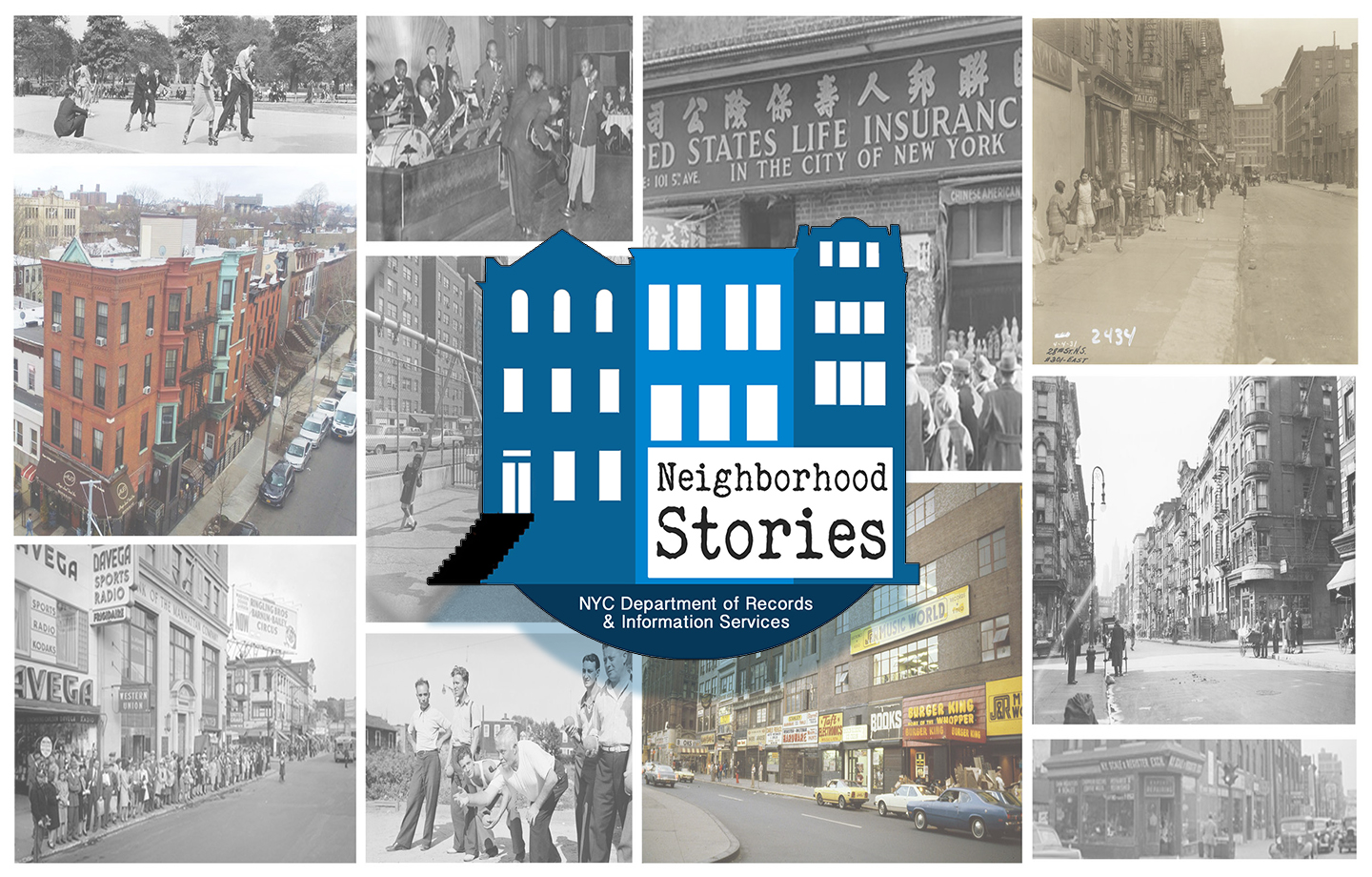|
|
SPOTLIGHT ON: Inside the Department of Buildings Collection at Municipal Archives |
|
by Alexandra Hilton and Amy Stecher |
|
|
On Tuesday, March 30, 2021, the New York City Department of Records and Information Services (DORIS) launched its Lunch and Learn Series, a monthly online conversation with agency staff and special guests on the collections of the Municipal Archives and Library, as well as the history of New York City. In the first installment of the series, archivists Amy Stecher and Alex-andra Hilton took participants “Inside the Department of Buildings Architectural Plans & Draw-ings Collection.” The Department of Buildings (DOB) collection consists of the architectural drawings and plans for Lower Manhattan, circa 1866-1978, covering the 958 blocks of Manhattan below 34th Street. These plans were required to be filed by builders, architects, plumbers, electricians and others whenever they built a new building or altered an existing building in New York City. The lunchtime program discussed the collection’s history, its acquisition by the Archives, the processing and conservation activities we’re engaged in and the challenges faced. Highlights and histories of some extraordinary buildings were also shared, including the Little Singer Building, the Rivington Street Bathhouse, the Margaret Louisa Home of the YWCA, Shore Quarters No. 57, and Bellevue Psychiatric Hospital. In the late 1970s, the Archives acquired over 5,700 rolls of buildings plans in less than optimal condition. In 2018, we received a grant to begin processing and rehousing the plans to reestablish intellectual control over the material and to create more optimal retrieval and storage conditions. The collection comprises multiple forms of graphic representation of buildings, from pencil sketches by carpenters, to carefully measured sections and plans by drafters, and intricate elevations by trained architects. There are examples of all types of uses — industrial, manufacturing, retail, and residential — and every type of building in the city office buildings, stores, factories, warehouses, dwellings, hotels, theaters, boardinghouses, churches, schools, stables, garages, and more. Throughout processing, each bundle of drawings are un-rolled and identified, sorted, flattened, re-paired, counted and cataloged, and carefully and neatly re-rolled onto acid-free tubes, wrapped with protective Mylar, and stored in acid-free boxes. Drawings in particularly poor condition are transferred to our conservation unit for more specialized treatment. Block and lot information for each drawing is verified and recorded in a spreadsheet inventory, along with the address, extent and date. Notes are also kept on architects and other important features that might further expand access to the collection. Remote Reference Work During the Pandemic by Rossy Mendez and Julia Robbins Even though our research rooms at 31 Chambers are not open to the public, the archivists and librarians have been busy. Remote reference work has been a huge part of the work staff at the Municipal Library and Archives have undertaken during the pandemic. Researchers send dozens of requests each month, which are initially fielded by reference archivists and librarians. Information is entered in a tracking spreadsheet, categorized, if appropriate, into a broad subject area such as Family History/Vitals, Property, Permissions, and promptly allocated to the departments that fulfill those requests. While many research questions are directed only at archival records, many involve resources from both the Library and the Archives collections. These are often the most interesting ones! Recent examples include a request from an Italian researcher about “adventure playgrounds” created in NYC parks. On the Library side, staff checked Department of Parks and Recreation materials in the Library catalog (annual reports, newsletters, etc.) and in its extensive clippings files. Meanwhile, archivists looked through Department of Parks correspondence files and collections of Parks Department design drawings. We were able to hone in on a particular adventure playground at West 67th Street, which was one the researcher was particularly interested in. Also, we pointed the researcher to other rich sources of information, including the Parks Department’s own website, which had important materials. An academic researcher recently inquired about records regarding Little Italy and its development over time. We located some relevant reports in the library that addressed the Risorgimento movement and tourism in the neighborhood. We also provided several folders from the LaGuardia and Wagner administrations that dealt with Italian Americans. Some other collections used/mentioned were Board of Estimate resolutions and Department of City Planning reports. Other highlights include:
Municipal Library Update for Spring 2021 by Christine Bruzzese Currently, the Municipal Library is closed to the public due to the pandemic. We expect to reopen in the Summer and will post information online. In the meantime, here is a summary of some activities we have been working on remotely:
by Elena Abou Mrad The Neighborhood Stories project just launched its third season, now in a virtual format! The project is a storytelling initiative which aims to gather and permanently preserve the stories of New York City community members by connecting local history with the records of City government maintained in the collections of the Municipal Archives and Library. Join the Neighborhood Stories Project and The Nuyorican Poets Café on Wednesday, April 21st at 7pm for Neighborhood Stories: Voices of the City, an online showcase and open mic night hosted by Caridad de la Luz (La Bruja) and featuring Advocate of Wordz, J.F. Seary, Ramya Ramana, and Jani Rose. We will celebrate the rich history of New York’s communities through personal stories about local experiences and impressions of the City’s diverse neighborhoods. To find out more about the project, visit the Neighborhood Stories website. Do you have a story to share about your New York neighborhood? Sign up with our digital form. |
|

